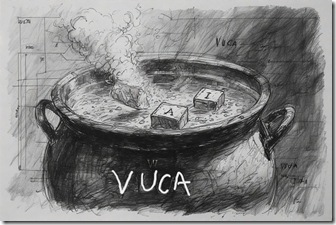[This is an extract from our book, “A Project Health Assessment Framework”, that is expected to hit the stands this year. Any comments welcome]
“With the help of Krishna, I will nail down the factors that make a project healthy, the factors that make a project meet the ‘gold’ standard.” thought Arjuna as he walked from his car to his office. He shivered in the cold, but he was excited. He was looking forward to the coaching session with Krishna.
He got himself a coffee and walked to his office saying “hi” to a few colleagues who were already at work.
When reached his office, Krishna was sitting there waiting for him. He looked at his watch. No, he was not late. Krishna was just early. Arjuna was sure that Krishna was well worth the money they were paying him.
“Hi, Krishna, how are you this morning?”
“Am well. You seem to be cheerful and confident.”
“Yes. My meeting with the chairperson cheered me up. It was a very useful meeting. Now, I cannot wait for our first session of coaching.”
Arjuna, who was doing the daily crossword while walking, put down his newspaper and sat down.
Krishna asked, “Well, Arjuna, have you thought about what we discussed yesterday about assessing projects?”
“Yes, I have.”
“What do we need to do?”
Arjuna said, “For one, we need to enable sustained health through focused and timely coaching of our project managers and team members, as required. Secondly, we need to gain visibility to improvement areas and value-creation opportunities in the project through objective observations and customized health-checks”
“Excellent. You seem to have got the main approach down pat. As far as the first part is concerned, I will coach you and some of the senior project managers. We can request the VP to hire some more coaches to help the team leaders and the engineers, if needed, later on. We can decide this based on the situation then.”
Krishna continued, “Now, let us take the second part. How do we gain this visibility to value-creation and improvement areas you are talking about? Don’t regular status update provide you with this information?”
Arjuna thought and said, “Well all these “leading indicator/lagging indicator” based approaches seem to give only objective number-based information.”
“Is that not what you want?”
“Of course, we need that. But we also need subjective information. We need to be able get the ‘human-experience’ based indicators to accurately read the status of a project’s health. And, a project that is overall healthy in all aspects of it is the one most likely to meet the ‘gold’ standard. In fact, you cannot ‘go for gold’ unless you can ensure that your project is overall healthy.”
Krishna said, “Okay. That makes sense. But, what are these indicators that measure both subjective and objective information? Only yesterday, I was going through a draft paper written by the project management expert, Anantha, and two of his colleagues, Srini and Shiv, of PM Power Consulting. They have discussed this aspect at length in their paper.”
“Oh, good. Somebody has already thought of this. What do they say?”
Krishna thought for a while and said. “The paper is based on the experience of Anantha and his colleagues over their many years of work in various organisations. It seems once Anantha was sitting in a project review, and he realized that the project manager was reporting ‘all green’, even while some of the team members were giving indications to the contrary.”
Arjuna asked, “Does this always happen?”
Krishna said, “Yes, the most difficult thing is to realize something is going wrong. The paper says that this experience got Anantha thinking. Over the next few months, based on his review of a large number of projects, he formulated an approach to assessing project health. His thinking was that we should be able to list a set of ‘manifestations’ which are visible features in which issues can be observed. We can then group these into a set of components and further group the components into what are called ‘vital signs’ of a project.”
Arjuna was interested. “Vital signs of a project? Much like the vital signs we use to assess the health of a human being?”
“Yes, exactly.”
“Give me an example of this manifestation, component and vital sign.”
Krishna referred to the paper, “Well, one manifestation is this: Regular communication with the customer exists regarding operational status – weekly, monthly, quarterly. This manifestation and many other similar ones are part the component Operational Connect with the customer and this component and other similar components are part of the vital sign Customer Connect.”

“Okay. This is interesting. So, what Anantha et al are saying is that measuring and assessing the set of manifestations comprising Customer Connect will tell you whether that vital sign of the project is healthy. Is that right?”
Krishna said, “Yes, that is right. Other than Customer Connect, the paper lists five more vital signs.”
“Oh, OK. This seems to be a good approach. I think I can look at this for our project. I hope the paper is published soon. Does the paper list all the components and manifestations under these vital signs?”
“No, it does not. It just gives us the vital signs. We will need to figure out the manifestations and components. Some of these may vary from organisation to organisation.”
Arjuna asked, “How will we do that?”
Krishna thought for a while. “My idea is that you should use one project each within your overall umbrella per vital sign. You can talk to the project manager and team members to gather inputs. These raw inputs can be used to define the manifestations.”
“That makes sense. So, I will talk to six project managers and their team, one team per vital sign, and get inputs that can help me put together the manifestations. Okay. I will come back to you with the raw data after I talk to each team. With your help, I can put together the framework for assessing each vital sign. How long do you propose that I spend on each vital sign?”
Krishna said, ‘I was thinking one week per vital sign. Before you meet each project team, you should put together a set of questions to ask so that the survey becomes easy. You will need separate sets of questions for different levels of team members.”
“Okay. Understood.”
Krishna said, “Come back to me after you have talked to the first team. What is the first vital sign you propose to tackle?”
“Customer Connect.”
“Good choice. All the best for your discussions.




